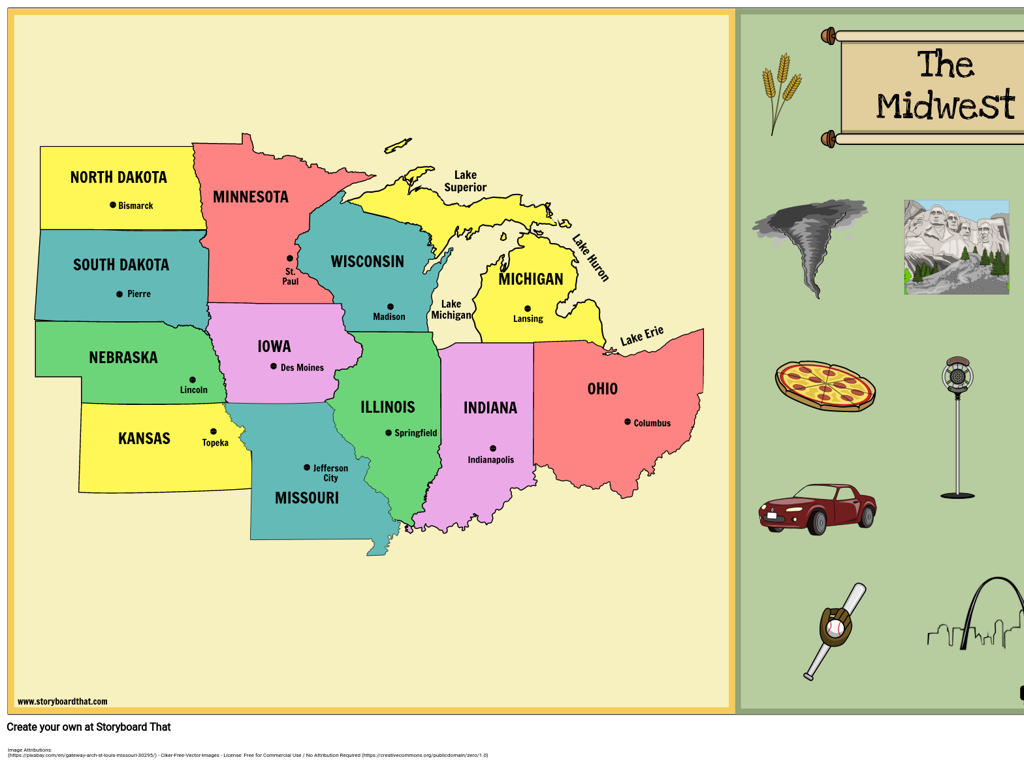Estimate Population Size Using Proportions
Subject: Math
Grade: Seventh grade
Topic: Ratios, Rates, And Proportions
Please LOG IN to download the presentation. Access is available to registered users only.
View More Content
Estimating Population Size with Proportions
– Understanding ratios and proportions
– Ratios compare two quantities, proportions show two ratios are equal
– Real-life applications of proportions
– Proportions are used in cooking, map reading, and shopping
– Estimating population using proportions
– Use a sample to estimate the total population size
– Overview of today’s lesson
|
This slide introduces the fundamental concepts of ratios and proportions, which are essential mathematical tools used to compare quantities and determine equivalences. Students will learn how these concepts are not just theoretical but are applied in everyday scenarios such as cooking recipes, reading maps, or shopping deals. The focus of today’s lesson is on using proportions to estimate larger population sizes based on a smaller sample, a key skill in statistics. This overview will set the stage for a deeper dive into the methods of estimation and the importance of representative sampling.
Understanding Proportions in Population Estimation
– Define a proportion
– A proportion is an equation stating two ratios are equal.
– Proportions in daily life
– Examples: recipes, maps, model building
– Proportion as ratio equality
– If a/b = c/d, then a:d and b:c are in proportion.
– Estimating populations with proportions
|
Begin by defining a proportion as an equation that shows two ratios are equivalent. Use relatable examples such as cooking recipes (e.g., doubling ingredients to maintain taste), map reading (scale), or model building to illustrate proportions in real life. Explain that proportions can be written as fractions in an equation, such as a/b = c/d, and if these ratios are equal, they are said to be in proportion. Emphasize how this concept is used to estimate population sizes by setting up proportions based on a sample and applying it to the larger group. Encourage students to think of situations where they might need to use proportions to make estimates.
Understanding Population Estimation
– What is population estimation?
It’s the process of approximating the number of individuals in a group.
– Importance of estimating population
Helps in planning, resource allocation, and understanding species health.
– Application in wildlife conservation
Used to track animal numbers, prevent extinction, and manage habitats.
– Estimation techniques
|
Population estimation is a mathematical technique used to infer the number of individuals in a population. This concept is crucial for students to understand as it has significant implications in various fields such as ecology, economics, and public health. Emphasize the importance of accurate population estimates in effective planning and resource distribution. In wildlife conservation, these estimates are vital for tracking species numbers, preventing extinction, and managing natural habitats. Introduce students to basic estimation techniques like sampling and extrapolation, and how proportions are used to estimate larger populations from smaller samples. Encourage them to think about how these methods could be applied in real-world scenarios.
Estimating Population with Proportions
– Setting up a proportion for estimation
– Proportion: a part, share, or number considered in comparative relation to a whole.
– Estimating total population from a sample
– If 10 out of 100 fish are tagged in a lake, and we catch 20 fish with 2 tagged, we can estimate the total population.
– Example: Estimating fish in a lake
– Using our sample, we set up a proportion: 2 tagged/20 total = 10 tagged/total population.
|
This slide introduces the concept of using proportions to estimate population sizes. Begin by explaining how to set up a proportion, which is a statement that two ratios are equal. Then, demonstrate how to use a sample size to estimate the total population by setting up a proportion based on the sample. For example, if a small number of fish in a lake are tagged and then a sample is caught, the proportion of tagged fish in the sample can be used to estimate the total number of fish in the lake. This method assumes that the sample accurately represents the entire population. Encourage students to think about why it’s important to have a sample that is representative of the whole population.
Estimating Population Size: Practice Problem
– Work through a practice problem
– Apply steps for population estimation
– Use proportions to estimate total population from a sample
– Discuss the solution process
– How did we arrive at the answer? What steps were taken?
– Reflect on methods used
– Why do these methods work? What assumptions are made?
|
This slide is designed to engage students in a hands-on practice problem to estimate population size using proportions. Start by presenting a problem where a small, manageable sample size is used to estimate a larger population. Guide the students through the steps of setting up and solving the proportion. After finding the solution, discuss the process and the reasoning behind each step, ensuring students understand the logic and the mathematical principles involved. Finally, reflect on the methods used, discussing their effectiveness and any assumptions that were made during the estimation process. Encourage students to ask questions and to think critically about the reliability of their estimates.
Group Activity: Estimating Population Size
– Break into small groups
– Receive a unique estimation scenario
– Each scenario involves a different animal or area
– Use proportions to estimate population
– Apply the proportion method learned in class
– Discuss your findings with the class
– Share your group’s estimation process
|
This activity is designed to foster collaborative learning and apply the concept of proportions to real-world scenarios. Divide the class into small groups, ensuring a mix of abilities in each. Provide each group with a unique scenario, such as estimating the number of fish in a lake or trees in a forest section, based on a smaller, counted sample. Guide them to set up a proportion equation using the sample size and total area to estimate the total population. After the activity, have each group present their findings and discuss the different approaches taken. This will help students understand the practical application of proportions and enhance their problem-solving skills.
Presenting Our Population Estimations
– Share your estimation process
– Discuss the variety of methods used
– Reflect on sample size significance
– Larger samples generally lead to more accurate population estimates.
– Analyze the accuracy of results
– Compare estimated vs. actual population to evaluate accuracy.
|
This slide is meant for students to present their findings on estimating population sizes using proportions. Each group will explain the steps they took to arrive at their estimates, allowing the class to see different methodologies. The discussion should highlight that while different approaches can be valid, the sample size plays a crucial role in the accuracy of the estimates. Teachers should guide students to understand that a larger sample size can reduce the margin of error and lead to more reliable results. Encourage students to think critically about how their estimates compared to actual figures, if available, and what factors might account for any discrepancies. This exercise will help students grasp the practical applications of proportions in real-world scenarios.
Class Activity: Estimate Our School Population
– Estimate total students using a sample
– Take a sample from one grade
– Count students in one grade and use it as a sample
– Extrapolate to estimate the whole school
– Use the sample to estimate the total by setting up a proportion
– Collaborate on the final estimate
– Work in groups to discuss and agree on an estimate
|
This activity is designed to apply the concept of proportions to estimate the population of our school. Start by selecting a representative sample from one grade level. Students will count the number of individuals in this sample and then use this number to set up a proportion that will allow them to estimate the total number of students in the school. Encourage students to work together in small groups to come up with their estimates, fostering collaboration and discussion. As a teacher, facilitate the activity by guiding them through the process of setting up the proportion and checking their calculations. Possible variations of the activity could include taking multiple samples from different grades or comparing estimates to the actual school population data if available.
Estimating Population Size: Recap
– Recap: Estimating with proportions
– Review the steps to calculate population estimates using sample data and proportions.
– Importance of accurate sampling
– Accurate samples lead to reliable estimates, affecting conservation, policy-making, etc.
– Applications in different fields
– Skills apply to biology, environmental science, and social studies.
|
This slide aims to consolidate the students’ understanding of using proportions to estimate population sizes. Begin by reviewing the method of taking a small, representative sample and scaling it up using proportions to estimate the total population. Emphasize the need for accuracy in sampling to ensure the reliability of the population estimate, which is crucial in fields such as wildlife conservation, resource management, and public policy. Highlight how these mathematical skills are not just theoretical but have practical applications across various disciplines, helping students appreciate the relevance of what they’ve learned. Encourage students to think of questions or situations where they could apply these skills.
Homework: Estimating Populations
– Find real-world population estimation
– Estimate population using proportions
– Use a proportion: part/whole = sample/total population
– Document your estimation process
– Write down steps taken to estimate
– Get ready to discuss in class
|
This homework assignment is designed to apply the concept of proportions to estimate population sizes, a practical skill in various fields such as ecology and public planning. Students should look for scenarios where population estimation is necessary, such as estimating the number of fish in a lake or the number of trees in a forested area. They should use the proportion method, where a small, manageable sample size is used to infer the total population. Encourage students to clearly document their process, including how they chose their sample and the calculations they made. In the next class, students will share their findings, providing an opportunity for peer learning and discussion on the challenges and successes they encountered.






